Affiliate links on Android Authority may earn us a commission. Learn more.
OPPO N1 vs OPPO Find 7 quick look
The OPPO Find 7 has been officially announced, bringing us a direct successor to the .
” href=”https://www.androidauthority.com/oppo-find-5-review-video-155793/”>OPPO Find 5. Of course some of you might be wondering how the Find 7 compares to OPPO’s most recent high-end handset, the OPPO N1.
In order to answer that question, we’ve pitted the two devices against one another in order to give you a better idea of how they differ. Without further ado, here’s a quick look at the OPPO Find 7 vs the OPPO N1!
Design and Build
While both handsets are made by OPPO, there are some very real differences between the two when it comes to the design language utilized.
Though both handsets offer excellent build quality, the OPPO N1’s matte plastic body is arguably not nearly as premium looking as the Find 7, which features a carbon fiber backing on the QHD model and brushed metal back on the 1080p variant. It’s also worth noting that the OPPO Find 7’s carbon fiber backing makes it much easier to grip than the OPPO N1.
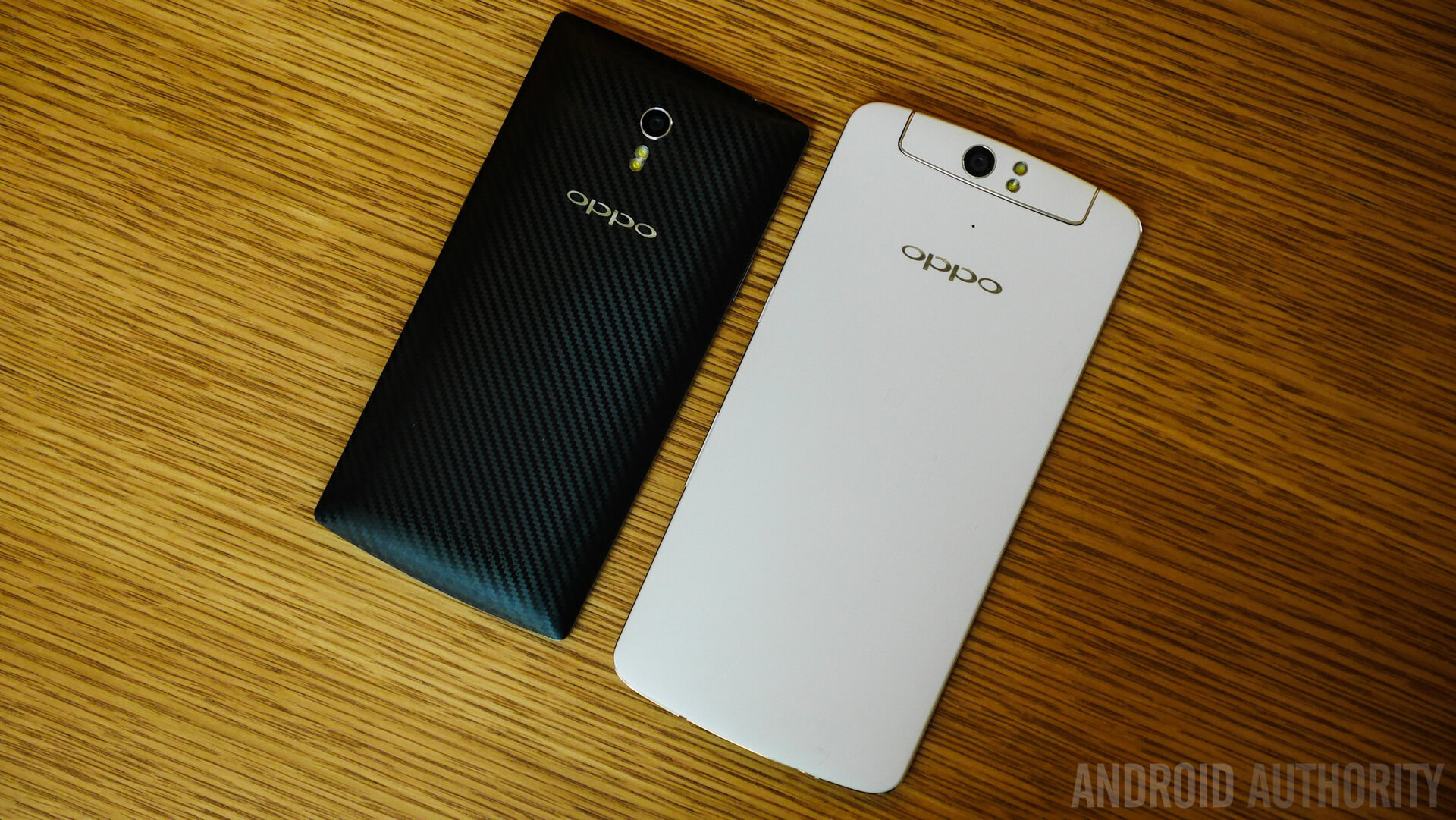
Another obvious difference is that the OPPO N1 offers a unique rotating camera, while the Find 7’s cameras are stationary. The Find 7 might not have a rotating camera, but one of its most distinguishing features is its unique Skyline notification light.
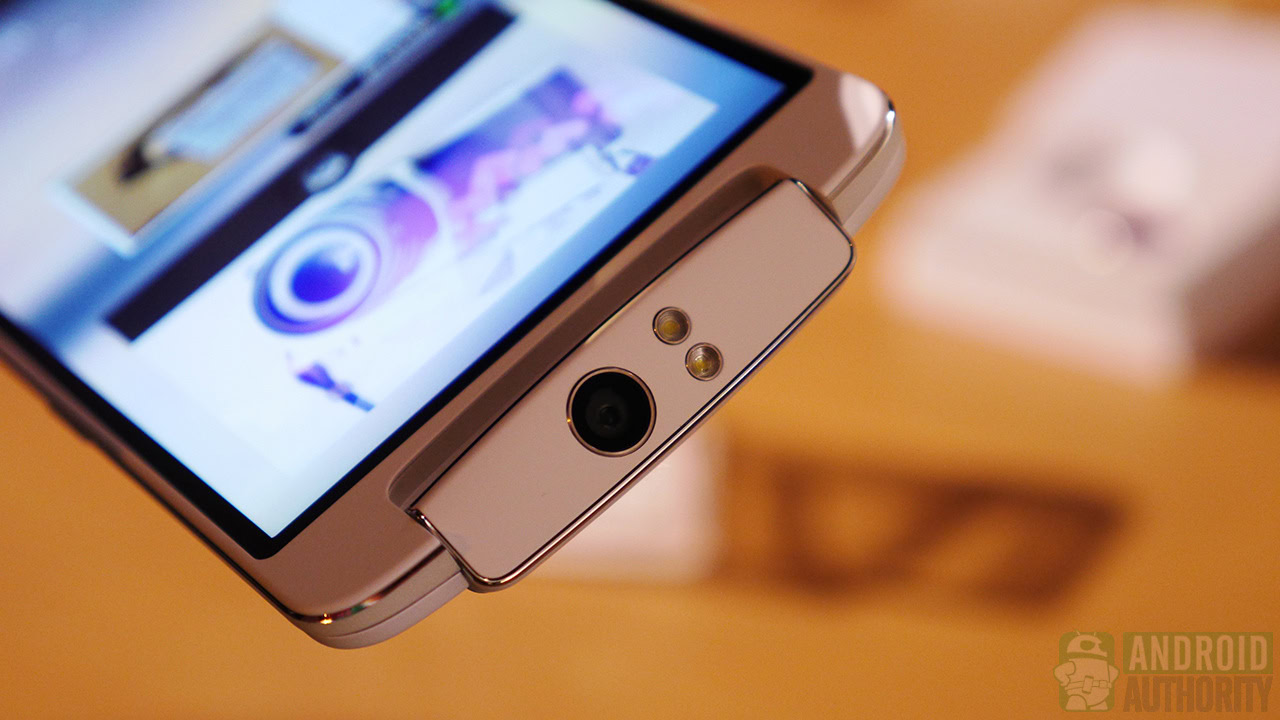
In terms of size, the OPPO Find 7 might not be a small handset with its 5.5-inch display and 152.6 x 75 x 9.2mm dimensions, but it’s still quite a bit lighter (170g vs 213g) and less bulky than the OPPO N1. The OPPO N1 has a 5.9-inch display and dimensions of 170.7 x 82.6 x 9mm.
The button layout on the OPPO Find 7 is also different from the N1. While the N1 had both the volume rocker and power button on the right side of the phone, the Find 7 has a power button on the left and volume rockers on the right.
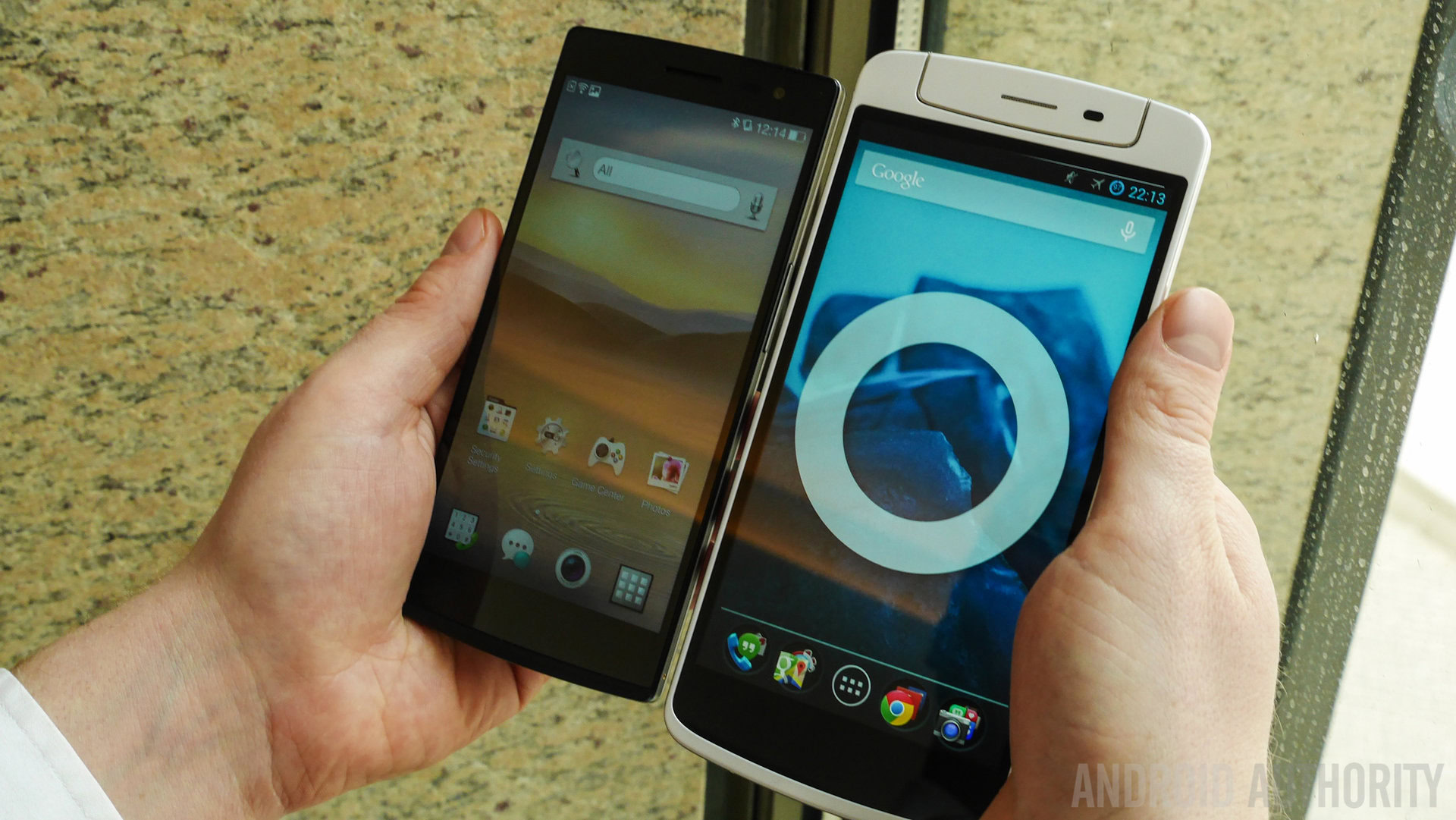
Display
The OPPO N1 offers a 5.9-inch display with a 1080p resolution and 373PPI. The display might have rich and vibrant colors, but it pales in comparison to the OPPO Find 7’s 5.5-inch display with a resolution of 2560 x 1440 and an astonishing 534PPI.
At the moment, no other handset is able to rival the Find 7’s display, though the vivo Xplay 3S comes fairly close. That said, the OPPO N1 still has a solid display and it really comes down to a matter of what’s more important to you: getting .4-inches more viewing space or having the highest possible resolution.
As we’ve already mentioned earlier, the Find 7 also offers a 1080p model, which should provide an image quality that more evenly matches the OPPO N1, though in a smaller package.
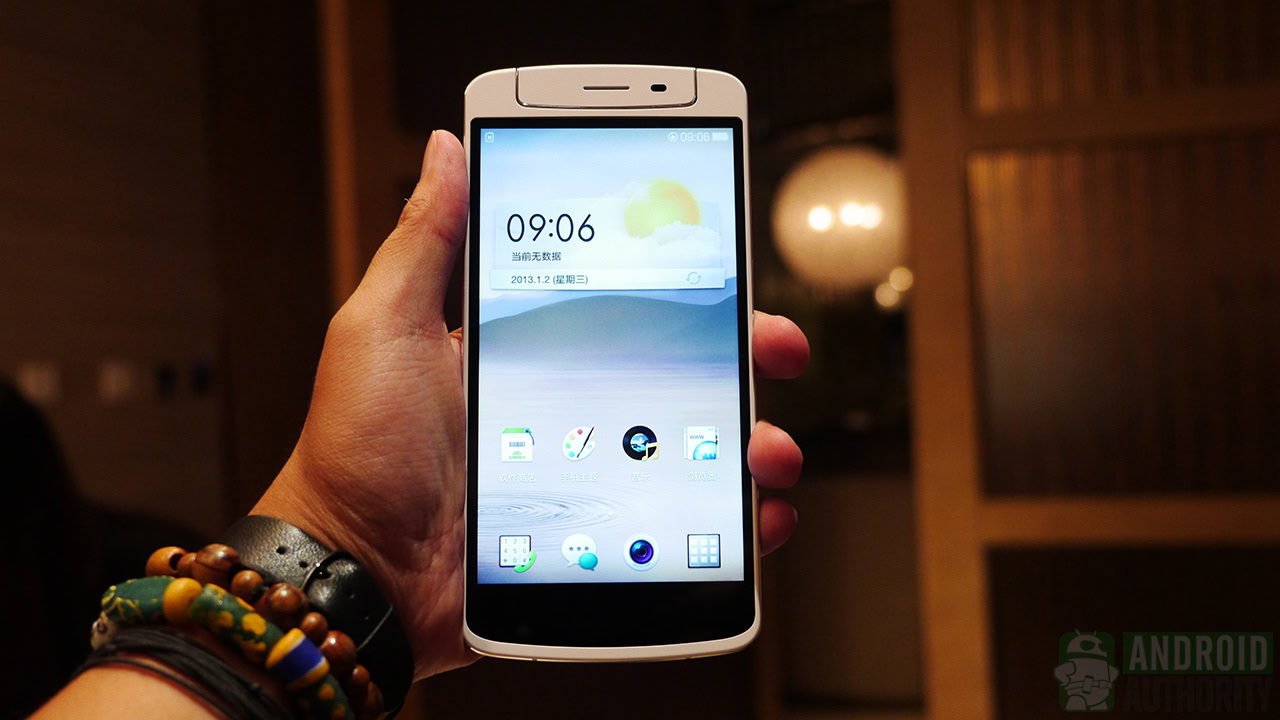
Performance and hardware
While the OPPO N1’s quad-core Qualcomm Snapdragon 600 processor is still a very solid performer to this day, the OPPO Find 7 is an upgrade over OPPO’s last major handset. The Find 7 offers a quad-core Qualcomm Snapdragon 800 processor clocked at 2.3Ghz for the 1080p model and an even faster Snapdragon 801 for the QHD variant.
Both the OPPO N1 and 1080p version of the Find 7 offer 2GB of RAM, which is more than enough to provide an excellent multi-tasking experience. For those looking for the most RAM possible, the QHD model actually ups things to 3GB of RAM. Overall all three devices are smooth and generally snappy, though the Find 7 QHD model is obviously a cut above the rest.
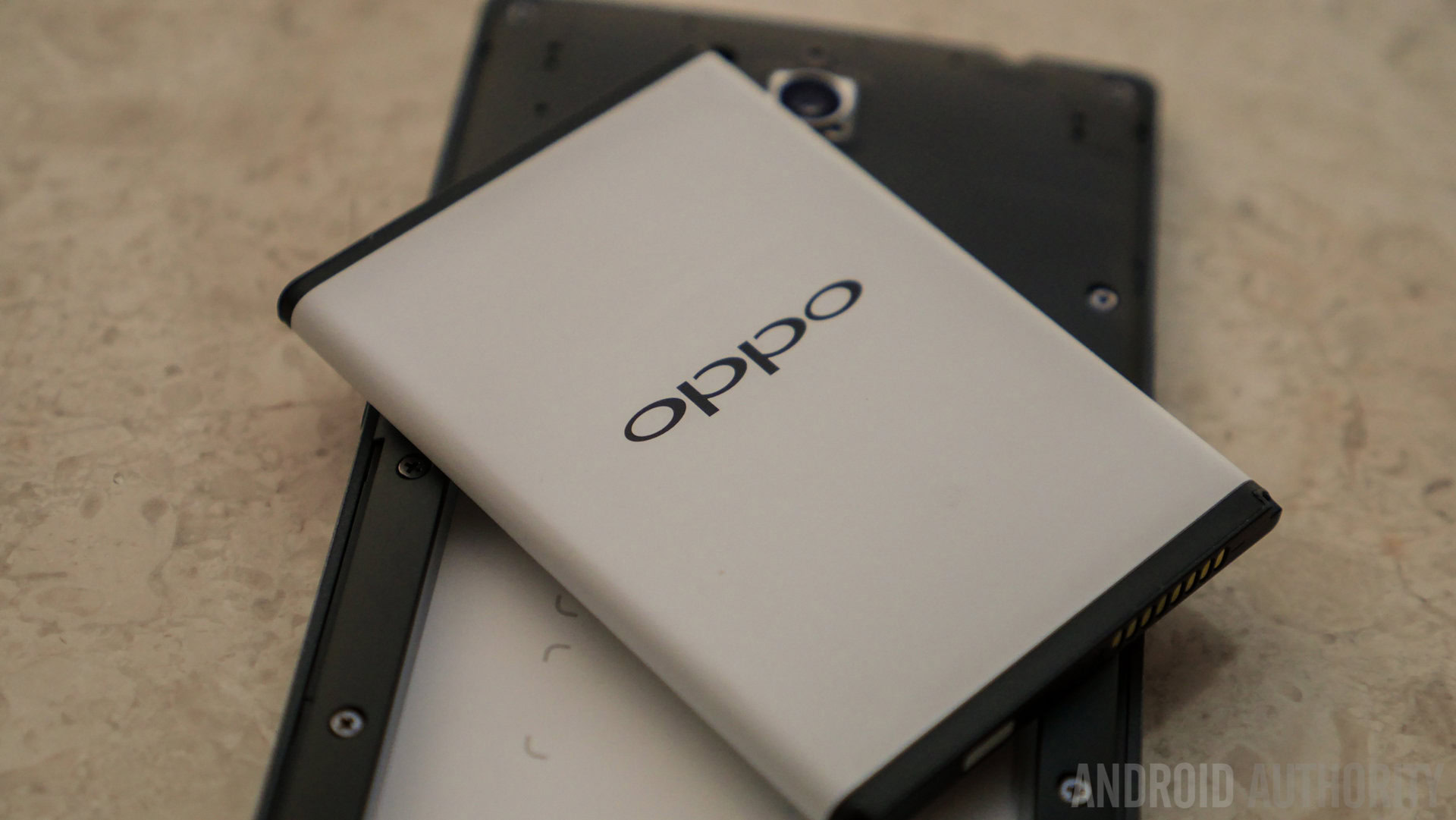
Moving beyond the SoC, the Find 7 and OPPO N1 also differ when it comes to battery life. While the N1 featured a massive 3610 mAh battery, the Find 7 has a comparatively smaller 3000 mAh battery for the QHD model and a 2800 mAh battery for the 1080p version. Despite the fact that the premium Find 7 has a QHD display, we imagine the two handsets should offer somewhat comparable battery life due to the fact that the OPPO N1 has a power hungry 5.9-inch display and the Find 7’s Snapdragon 800 series CPU is said to be more power frugal than the Snapdragon 600.
Battery size and life aside, the OPPO Find 7 has the advantage of featuring multi-step constant current charging technology. Basically this tech allows the handset to charge from 0% to 75% in as little as 30 minutes!
It’s also worth noting that the Find 7 is the first OPPO device to offer LTE support, and also differs from the OPPO N1 by offering a microSD slot for expandable memory.
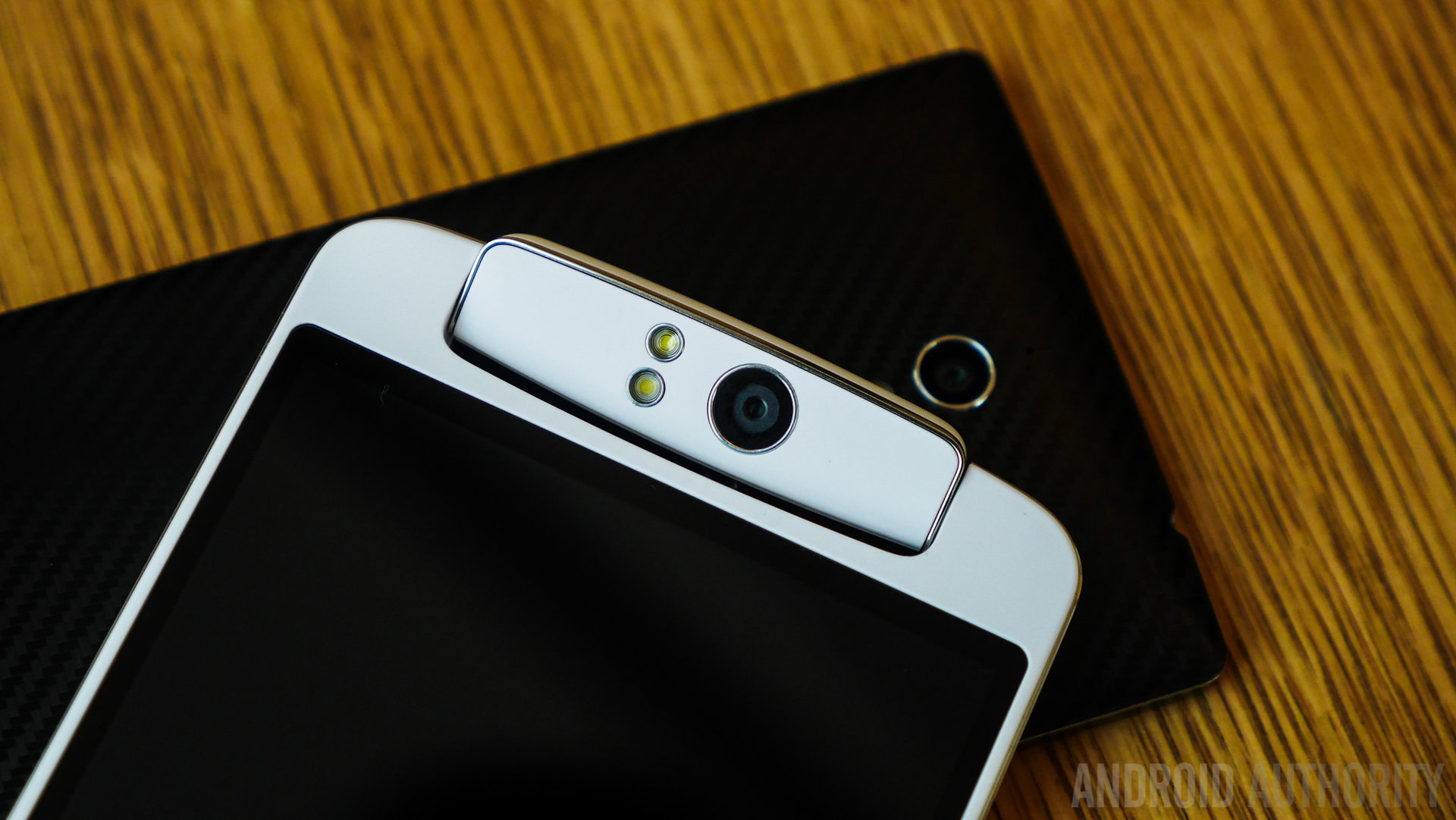
Camera
One of the coolest features found on the OPPO N1 is its 13MP rotating camera. While the OPPO Find 7’s 13MP shooter might not have the rotating functionality, it still delivers an excellent photo-taking experience and offers several special features including 4K video recording and a Super Zoom mode that allows it to focus on more details by taking ten pictures in the backend and combining them to create a 50MP image.
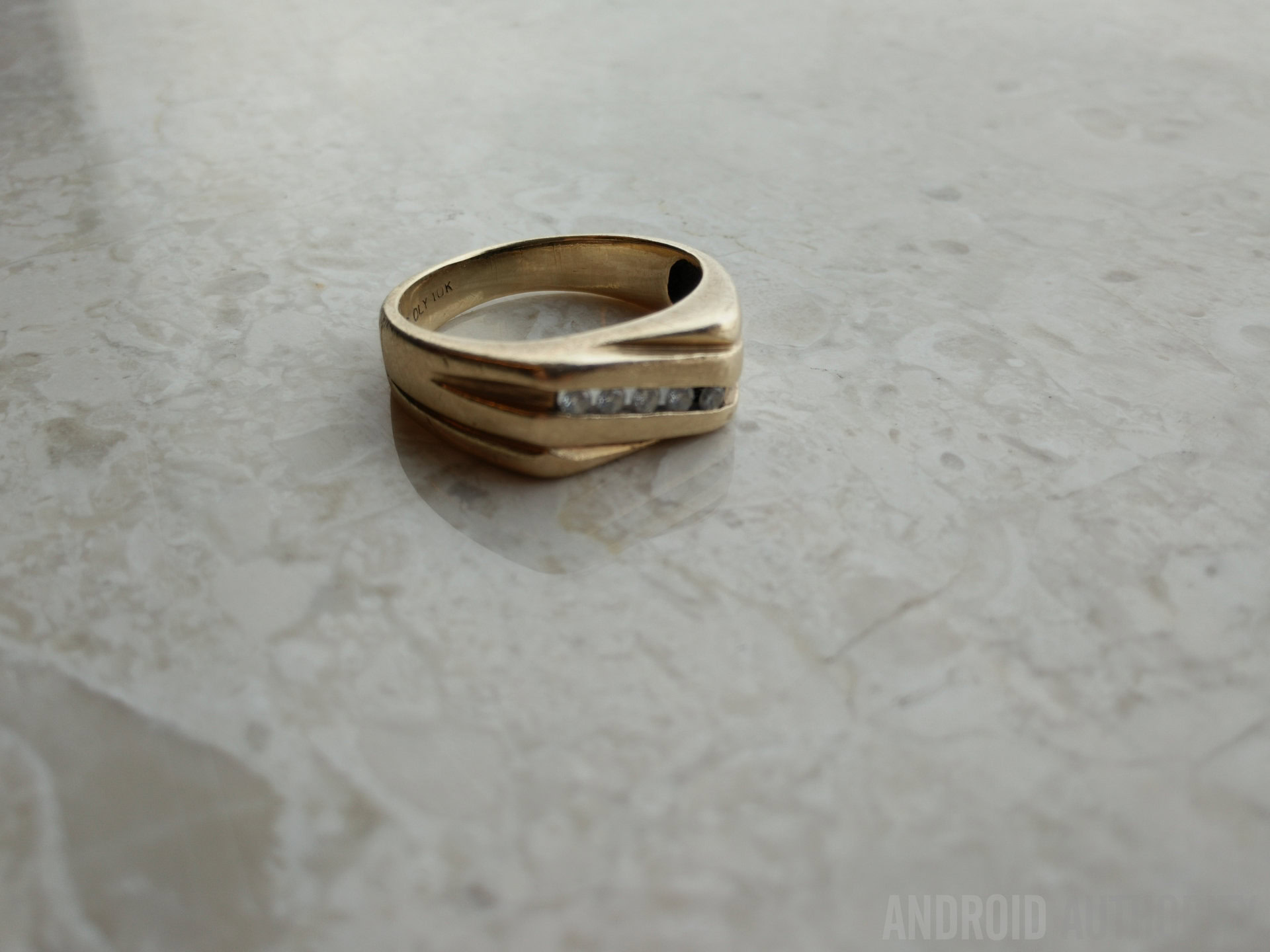
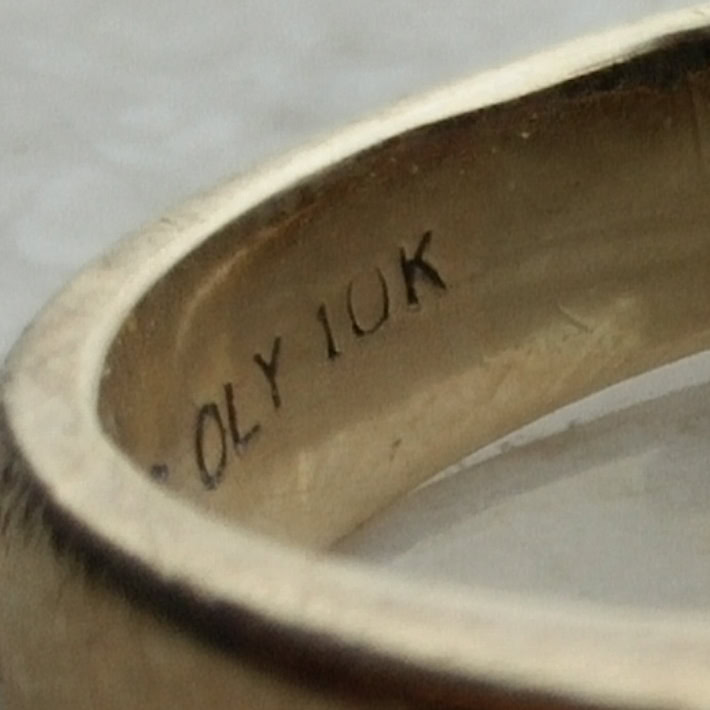
As for the camera software? Since both handsets are based on the OPPO Color ROM, you’ll find that the camera app is largely the same as what was found on the OPPO N1. Some of the camera modes include normal, panorama, high speed, rewind, beautify, slow shutter and a GIF maker.
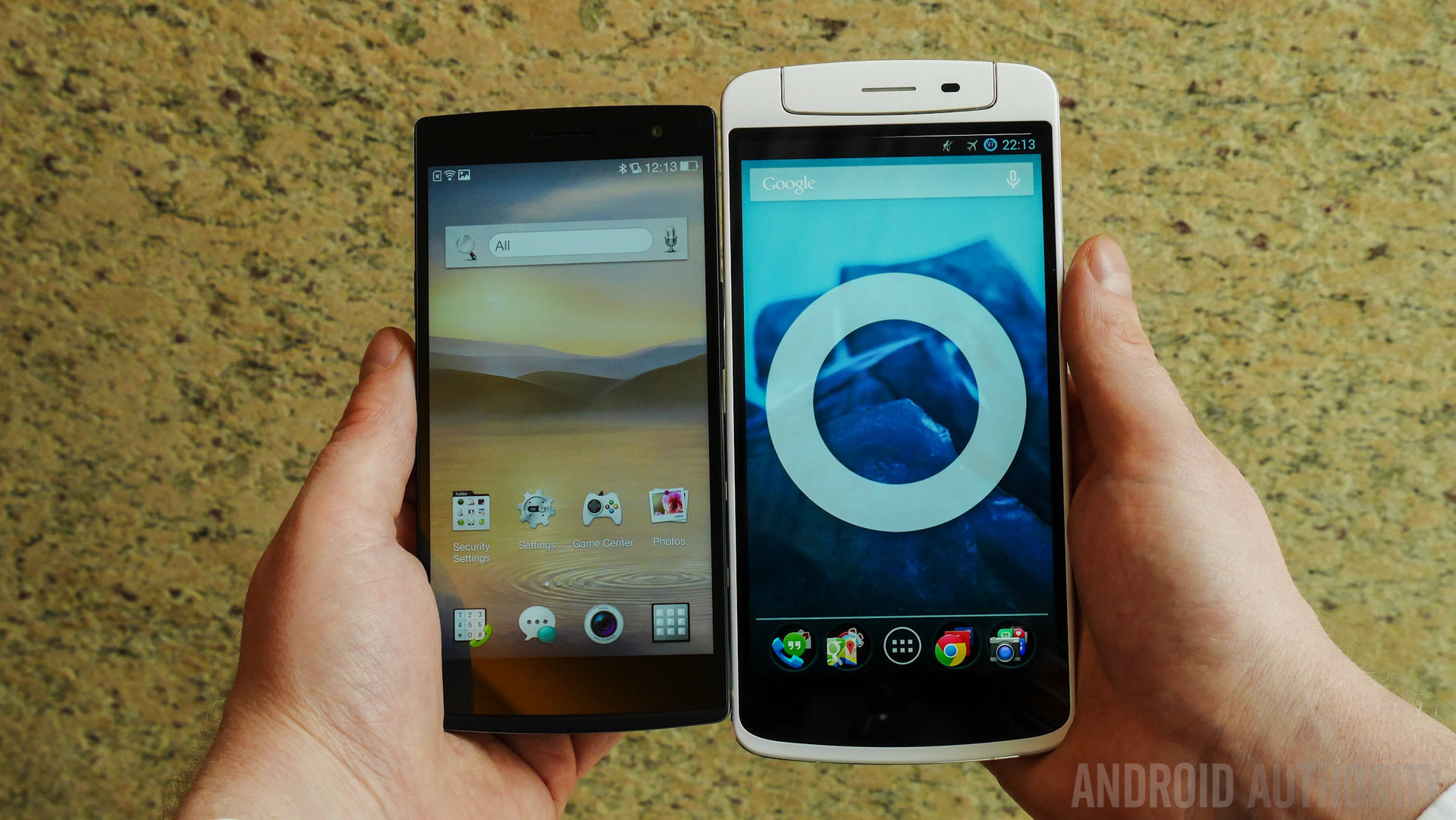
Software
The OPPO Find 7 and OPPO N1 both utilize OPPO’s Color OS ROM, which is based on Android 4.3 Jelly Bean, though the OPPO N1 also offers a Cyanogenmod edition.
Both handsets have tons of special features and customizations that are unique to newer OPPO devices such as double-tap to awake. OPPO’s Color OS also offers some cool features like a gesture panel that allows you to draw programmable gestures to perform a bunch of different tasks.
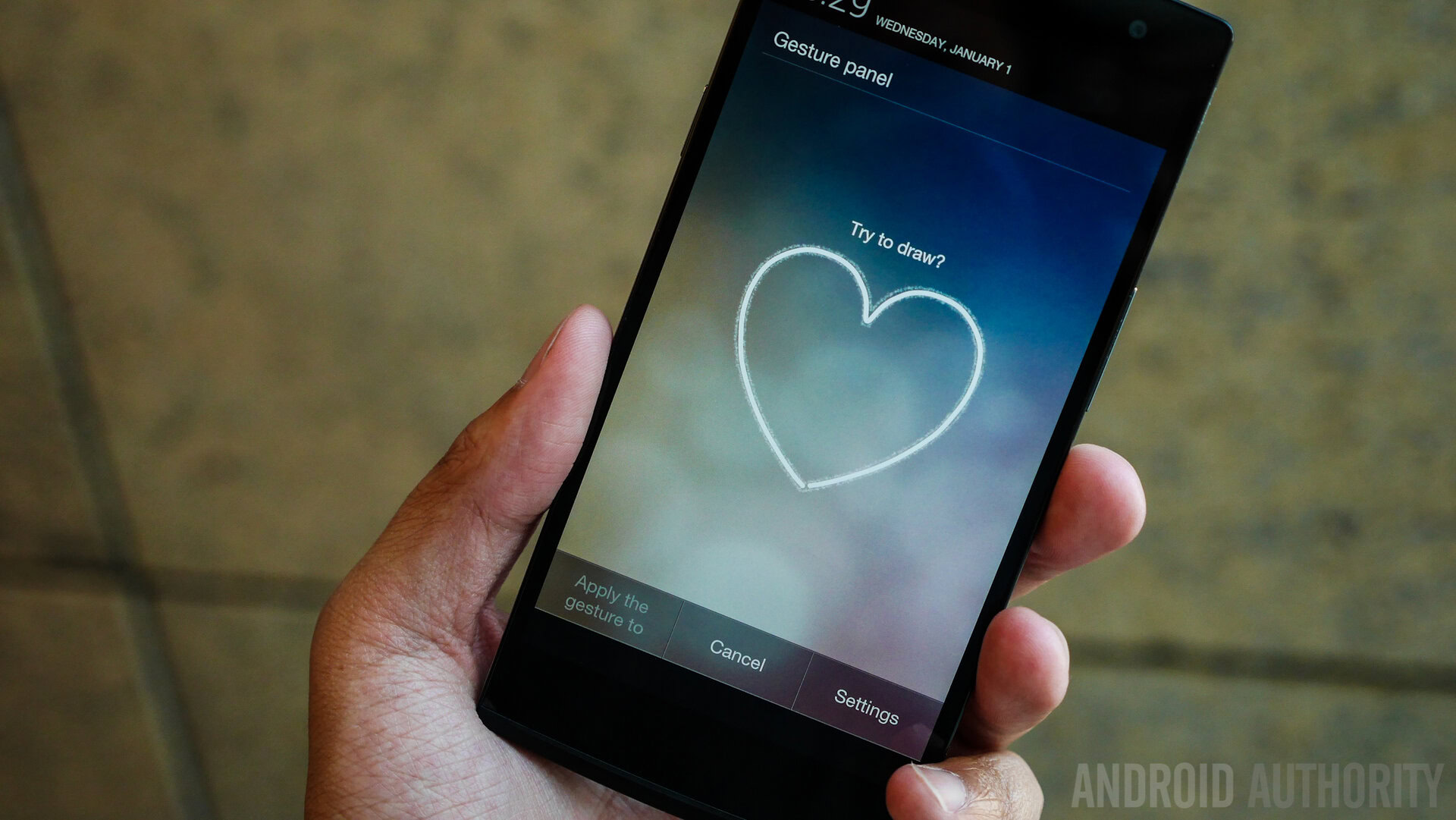
Another unique feature is Sky gestures, which can be accessed by holding down the volume button and then moving the phone around in certain patterns to turn on torch, camera or the phone.
Specs Comparison
| OPPO Find 7 | OPPO N1 | |
|---|---|---|
Display | OPPO Find 7 QHD: 5.5-inch, 2560 x 1440, 538ppi 1080p: 5.5-inch, 1080 x 1920 | OPPO N1 5.9-inch, 1080 x 1920, 373 ppi pixel density |
Processor | OPPO Find 7 QHD: Snapdragon 801 SoC 1080p: 2.5GHz Qualcomm Snapdragon 800 | OPPO N1 quad-core 1.7 GHz Qualcomm Snapdragon 600 |
RAM | OPPO Find 7 QHD: 3GB RAM 1080p: 2GB RAM | OPPO N1 2GB |
Cameras | OPPO Find 7 13-megapixel, IMX214 Sony sensor, Dual-mode LED, Aperture f/2.0 | OPPO N1 13 MP, 4128 x 3096 pixels, autofocus, dual-LED flash, rotating lens |
Battery | OPPO Find 7 QHD: 3000 mAh 1080p: 2800 mAh Fast charging technology | OPPO N1 Li-Ion 3610 mAh battery |
Storage | OPPO Find 7 16/32GB storage, with microSD for expansion | OPPO N1 16/32GB storage, no microSD support |
Networks | OPPO Find 7 International: GSM/GPRS/EDGE: 850/900/1800/1900MHz WCDMA: 850/900/1900/2100MHz FDD-LTE: Bands B1/3/7/20 TD-LTE: Band B40 Mexico & US: GSM/GPRS/EDGE: 850/900/1800/1900MHz WCDMA: 850/900/1700/1900/2100MHz FDD-LTE: Bands B1/4/17 | OPPO N1 2G: GSM 850/900/1800/1900 3G: HSDPA 850/900/1700/1900/2100 |
Connectivity | OPPO Find 7 USB OTG, Bluetooth 4.0, Wi-Fi 802.11 ac, Wi-Fi Direct, Wi-Fi Display, GPS, Distance sensor, Light sensor, G-sensor, 4D Gyroscope | OPPO N1 USB OTG< Bluetooth 4.0, Wifi 802.11 b/g/n, Wi-Fi Direct, DLNA, Wi-Fi hotspot, NFC |
Software | OPPO Find 7 OPPO Color OS, based on Android 4.3 Jelly Bean | OPPO N1 OPPO Color OS, based on Android 4.3 Jelly Bean |
Dimensions | OPPO Find 7 152.6 × 75 × 9.2 mm, 171g | OPPO N1 170.7 x 82.6 x 9 mm, 213g |
Gallery
Conclusion at a glance
The OPPO Find 7 is certainly a step up from the OPPO N1 in terms of raw hardware, display resolution and many other factors. That said, it really comes down to what form factor you’re looking for.
If you want the latest OPPO flagship in a size that’s still quite large but not exactly a massive beast, you’ll want the Find 7. For those looking for a handset that pushes the boundaries of phone and tablet, the OPPO N1 could still be an excellent choice.